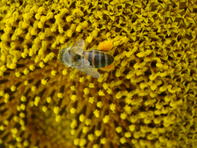The profile of beekeepers in South Africa (SA) does not differ much from the rest of the world. Less than 5% of beekeepers in SA own the land where they keep less than 5% of their bees.

Beekeepers are therefore reliant on other landowners, private, state or nature reserves, to support their beekeeping activities.
Statistics about beekeeping in South Africa are limited, but in 2017 South African bee hives only produced around 1 500 ton of honey per annum, in comparison to around 3 000 tons 25 years ago. It has been confirmed that more than 3 000 tons of honey are imported annually, mostly from China. South African exports to other countries are almost at zero.
When compared to other Southern Hemisphere countries, South Africa seems to be less than ideal for honey production and bee movement. It is estimated that up to 200 000 swarms are managed in South Africa in comparison to around 650 000 in Australia and 450 000 in New Zealand (NZ).
Chile and Argentina show more or less the same figures as Australia and NZ. All four of these countries are net exporters of honey, with Argentina producing more than 70 000 tons per year.
Three Bee Disasters in South Africa
The South African beekeeping industry is currently (2017) experiencing negative growth because of three recent disasters. In the early 1990’s, the Cape Bee (Apis mellifera capensis) infiltrated the northern provinces of South Africa, where the African bee (Apis mellifera scuttelata) was normally found. It has already shown a negative impact on beekeeping in the north.
Secondly, in 1997 the ectoparasite, Varroa destructor, settled in the Western Cape and continued to spread throughout the country. The third crisis ensued when the feared American foulbrood, a deadly bacterial disease of honey bee brood was also identified in the Cape in 2009.
Bacterial spores can easily be spread between hives through beekeeping practices such as the exchange of equipment and movement of infected combs. It is expected to spread to the north within the next 5 years (2022).
By Nico Langenhoven